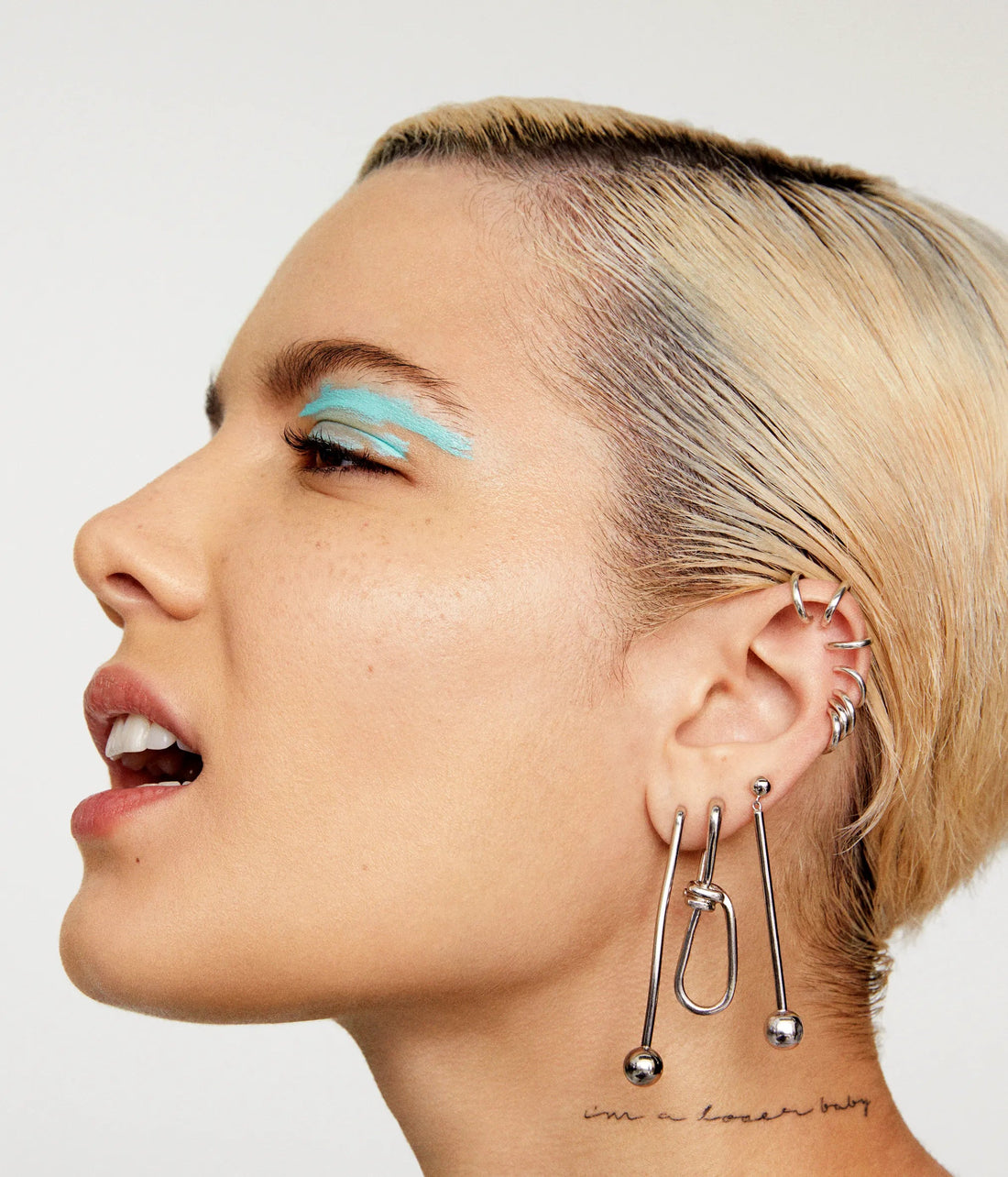You’ve taken the plunge and got yourself a brand new piercing. Congrats! But you’ve started to notice a pesky bump around your piercing, even though you’ve been doing your piercing aftercare.
Don’t panic. These bumps can show up for anyone, even veterans. So, how do you make a piercing bump go away?
In this blog, we’ll give you the complete breakdown of the best piercing bump treatment, including what to avoid and which products to use.
|
*Psst* We’ve made a handy video if you’re more of a listener than a reader. 😉 |
What is a piercing bump?
Before we get started telling you how to get rid of a piercing bump and piercing bump treatment, let’s pin down exactly what one is. A piercing bump is a hard piece of tissue that forms inside or near the piercing. They usually occur in areas of more dense tissue like the cartilage or your nose. There are a few types of piercing bumps:
- hypertrophic scarring,
- cysts caused by dead skin or hair, or
- swelling of infectious fluid.
Not ideal.
Do piercing bumps go away?

The short answer is yes; most piercing bumps will reduce over time. Even a persistent cyst or abscesses will get better with the help of some home remedies or a specialist piercing bump treatment.
However, if you are dealing with a keloid, it might be a different story.
Piercing bumps vs keloid
There is an important distinction between a piercing bump and a keloid.
So, what is a keloid? It is a larger, rubbery (often permanent) scar. It will stand out from any other kind of bump because it will be much larger than the surface area of the wound. These troublesome bumps have three times more collagen than hypertrophic scars and 20 times more collagen than healthy skin.
Unfortunately, keloids can’t be as easily taken care of with at-home piercing bump treatment. If you think you have a keloid, it’s best to go to a dermatologist as you might need steroids, a chemotherapy injection, or even have it surgically removed.
This may all sound scary, but keloids are rarer than the average piercing bump. You’re more likely to experience keloids if you have a darker skin tone or if there is a family history of keloid formation. The long and short of it is if you haven’t had a keloid by the time you’re in your 20s, the chances are you won’t be getting one anytime soon.
How to make a piercing bump go away
Now that you’ve identified that you have a piercing bump and not a keloid, here is a step-by-step guide on how to treat it.
1. Find out what’s causing the issue
It may sound obvious, but it’s the most important step. There are many factors that lead to skin irritation, especially around the site of new piercings and tattoos. It might be something in your daily routine, so think about what you’ve been up to since you got your piercing.
Common causes of bumps include a new piercing snagging or getting caught on something. This can happen in the first sixth months after getting your piercing if you sleep on it funny or catch it on something like your headphones.
Other causes include poor fitting or poor quality jewelry, dirt getting in the wound, changes in humidity, or dramatic changes in air pressure (so maybe hold off on getting that helix before your holiday ✈️ ).
New piercings are really exciting, but it’s important to remember that they act like wounds, and the skin needs time to heal. So remember to wash your hands regularly before touching your piercing, and maybe stay off the animal cuddles until it’s fully healed.
2. Check the jewelry

When getting a piercing, there are a few things you need to check the quality of the jewelry is one of them. This is why it’s really important to get your piercings done at a professional studio.
While it may be tempting to try and save a few dollars on a cheaper piercing, you’re going to pay for it in the long run. Make sure your stud or ring is made of an appropriate material like stainless steel, surgical plastic, or even glass.
Even if it’s made from a good quality metal or plastic, a poor-fitting piercing can cause just as many issues. When the jewelry is being fitted, there needs to be enough room for swelling.
If you think your jewelry might be poorly fitted, go to a trusted piercing studio in your area, and they should be able to check the quality of your piercing.
3. Clean your piercing
One of the most important steps of a piercing journey is aftercare. Cleaning your piercing every day will reduce the chance of cysts or bumps appearing. You don’t necessarily need anything fancy; an antibacterial soap should be enough. But if you want to take that bit of extra care, cleaning the piercing with a sea-salt solution will help protect against infection.
4. Get a piercing bump treatment
@bodyj4you New!! Piercing Bump Aftercare Treatment,Scar Removal Shrinking Keloid Soothing Skin Recovery,Ear Lobe,Tragus,Nose,Lip,Natural Solution Oil Drop (10ml) #bodyj4you #piercingbumb #oiltreatment #piercingtok #bodyjewlery #soothingskincare #skincaretiktok #oildrops #aftercarepiercing ♬ original sound - BodyJ4You
All these tips are great for avoiding getting an abscess in the first place, but what if you’ve already got a piercing bump?
Well, then it’s time to try a piercing bump aftercare treatment. Oils such as BodyJ4You Bump Solution can reduce redness, swelling, and scarring. Apply natural aftercare like this two to three times a day.
5. Try home remedies

We’ve already mentioned salt solutions, but there are a few remedies you can try with things you can find in your (or your mom’s) kitchen cupboard.
Some bumps respond well to a herbal press, which can be made from camomile tea and hot water. The camomile reduces the inflammation and the heat can help draw out some of the irritation. The same can be done with tea tree oil and turmeric (which has antiseptic properties).
If none of these work, apple cider vinegar is a very effective home remedy. A study conducted by the European Journal of General Medicine concluded that it was an effective remedy against infection due to its percentage of acetic acid.
6. Be patient
Sometimes the best remedy for a piercing bump is time. As we mentioned before, when you get a new piercing, your body is healing from a wound — and it’s very good at doing that. Before you jump to try all the forms of piercing bump treatment, give the site time to heal, which can take a few weeks or months. Experts recommend waiting three to six months before changing your jewelry.
However, if you have a piercing bump that won’t go away after more than six months, consult your doctor or your dermatologist.


